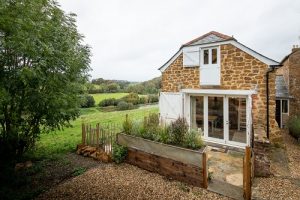What is Permitted Development in the UK?
For most types of construction work in the UK, planning permission is required for the local authorities to manage and regulate different aspects of building work. Planning permission also helps protect buildings and areas which need to be conserved.
Some types of building work don’t require planning permission which is covered by permitted development rights (PDRs). In this blog post, we’ll discuss what permitted development actually is, where it applies and how it may affect your construction project.
Cook Brown Building Control are one of the UK’s leading independent approved inspectors for commercial and residential properties, we have a host of experience in dealing with the complete construction process from design stage through to completion.
What are Permitted Development Rights?
According to the official government guidance, Permitted development rights are “a national grant of planning permission which allow certain building works and changes of use to be carried out without having to make a planning application. Permitted development rights are subject to conditions and limitations to control impacts and to protect local amenity.”
In short, Permitted development rights allow the improvement/extension of homes where it is deemed the building work is not extensive enough to require any sort of planning permission.
Some PDRs cover building operations, such as home extensions, whereas others cover change of use of buildings. They derive from a general planning permission granted by Parliament, rather than from permission granted by the local planning authority (LPA)
In some cases, the Local Planning Authority can suspend PDRs in their area if it is deemed essential. Between 2020 and 2021, Parliament ran a consultation to revise some PDRs. There were a few changes but for the most part, the PDRs were just consolidated and simplified.
Where do Permitted Development Rights Apply?
There are of course some cases where even if the work is minimal and eligible, PDRs won’t apply. In addition to cases where they have been revoked by the LPA. The following areas are not eligible for PDRs:
- National Parks
- Conservation Areas
- World Heritage Sites
- Areas of Outstanding Natural Beauty
- Preserved areas such as the Norfolk and Suffolk Broads

It is also important to note that in most cases permitted development rights only apply to houses and flats are lot less likely to be eligible for Permitted Development Rights. Another case where you won’t have PDRs is when the house was originally built using PDRs, you will need planning permission to do any additional work.
For more information, please read the government guidance on where planning permission is required, or get in touch with one of our expert team who can guide you through the process.
This means most small scale works to homes are eligible under PDRs but if you’re unsure then it’s always worth checking with your local authority, or a building controller before any work is started.
Here’s a list of common PDR projects and eligible types of building work:
- Side extension – Must be on the side of the house and can’t face motorways. You will also have to use the same building materials as the house. It shouldn’t be taller than or more than half the size of the original house.
- Rear extension – Must be at the back of the house and can’t go beyond the rear wall. It also shouldn’t be larger than 50% of the original house, taller than 4m or the original house.
- Garage conversion – Should not enlarge the building and detached garages cannot be changed into a living space. Similar materials should be used, and all work should be internal.
- Two-storey conversion – Should be less than 50% of the width of original house. Similar materials should be used to the original house build and there shouldn’t be windows in the walls or in the side elevation of the roof.
- Loft conversion – numerous restrictions but an important one is that the loft should only add 50 m3 of additional roof space.
- Wrap-around extension – each individual extension will be considered separate and must adhere to respective restrictions.
*Please note this list and the summary of guidelines and restrictions are in no way extensive so please remember to do your own research.
The Federation of Master Builders has comprehensive guidance on what you and can’t do it and they are good resource for any questions you may have on your upcoming construction projects.
Will Permitted Development Rights Mean I don’t have to Apply for Planning?
As we’ve discussed in this article, PDRs can in most cases remove the need to apply for planning. This is not always the case though and for some projects or depending on your area, you will still need to submit a planning application to your local authority.
This application is almost certainly going to be accepted and it is more of a formality; but it’s always good to make sure everything is done above board and has been approved in some way.
You can also apply for a Lawful Development Certificate (LDC) which is a document that serves as proof the building work you plan to carry out has been approved by the relevant authorities.
Development and Building Work Planning with Cook Brown Building Control
As experts in building control, we can help you understand what you need to do and which guidelines you need to follow when undertaking a construction project or building work.
We provide a range of relevant services, from approved inspectors and building control advisors to building regulation consultancy.
We are licenced by the Construction Industry Council to provide building regulation approvals for all types of constriction projects. If you are looking for independent advice on building regulation compliance from the design stage through to the completion of your project, we are here to help.
Get in touch today to find out how we can help you with your next project.